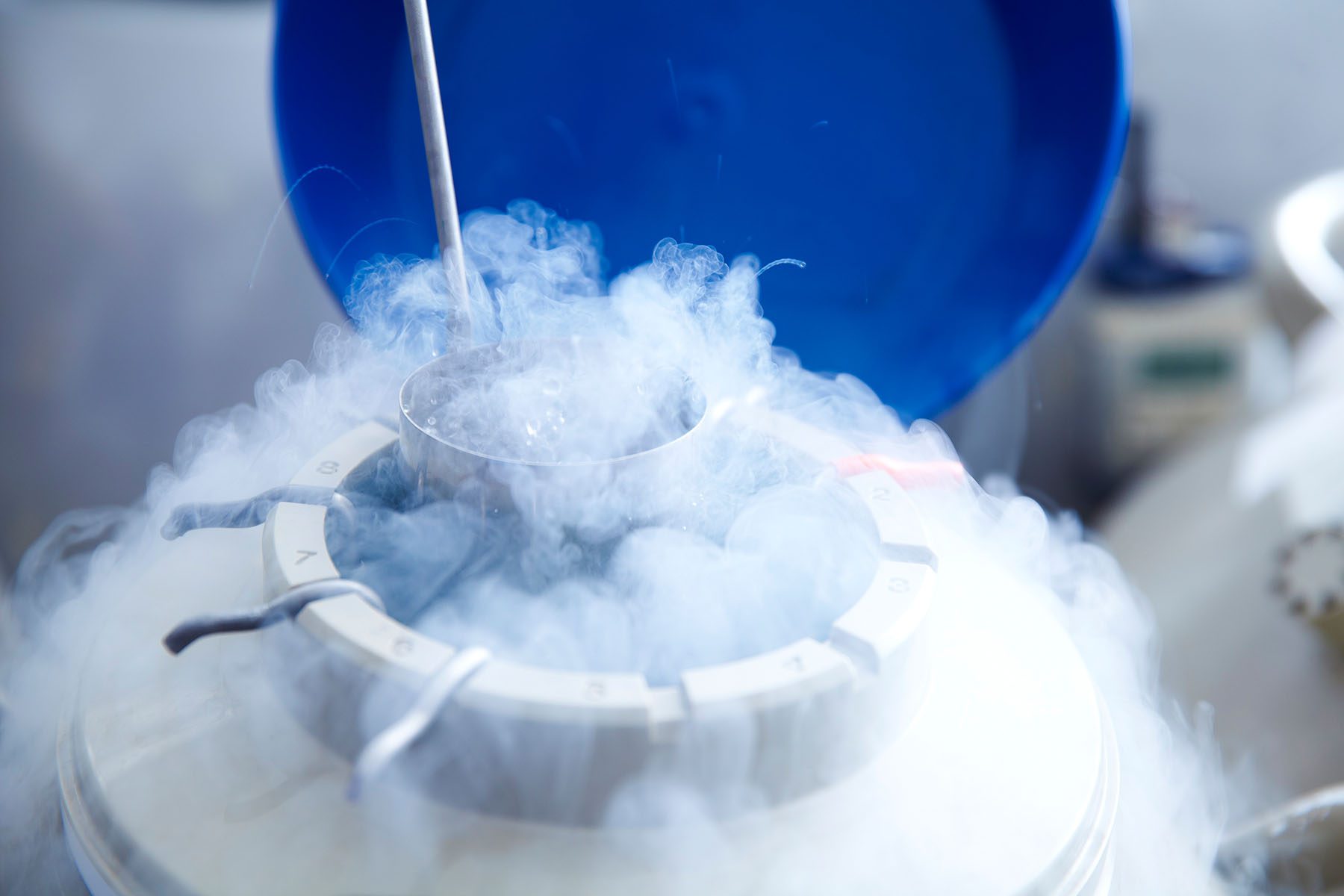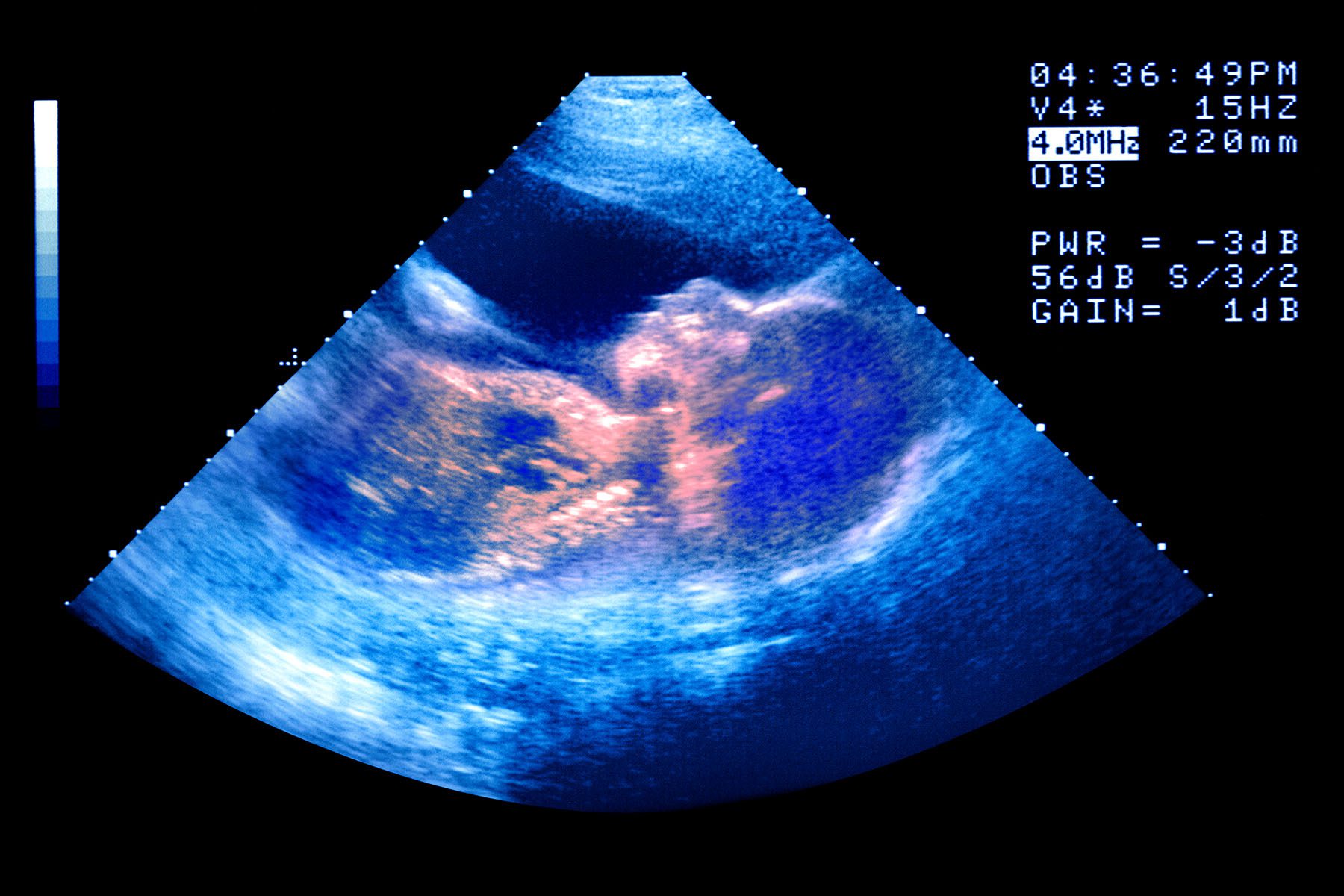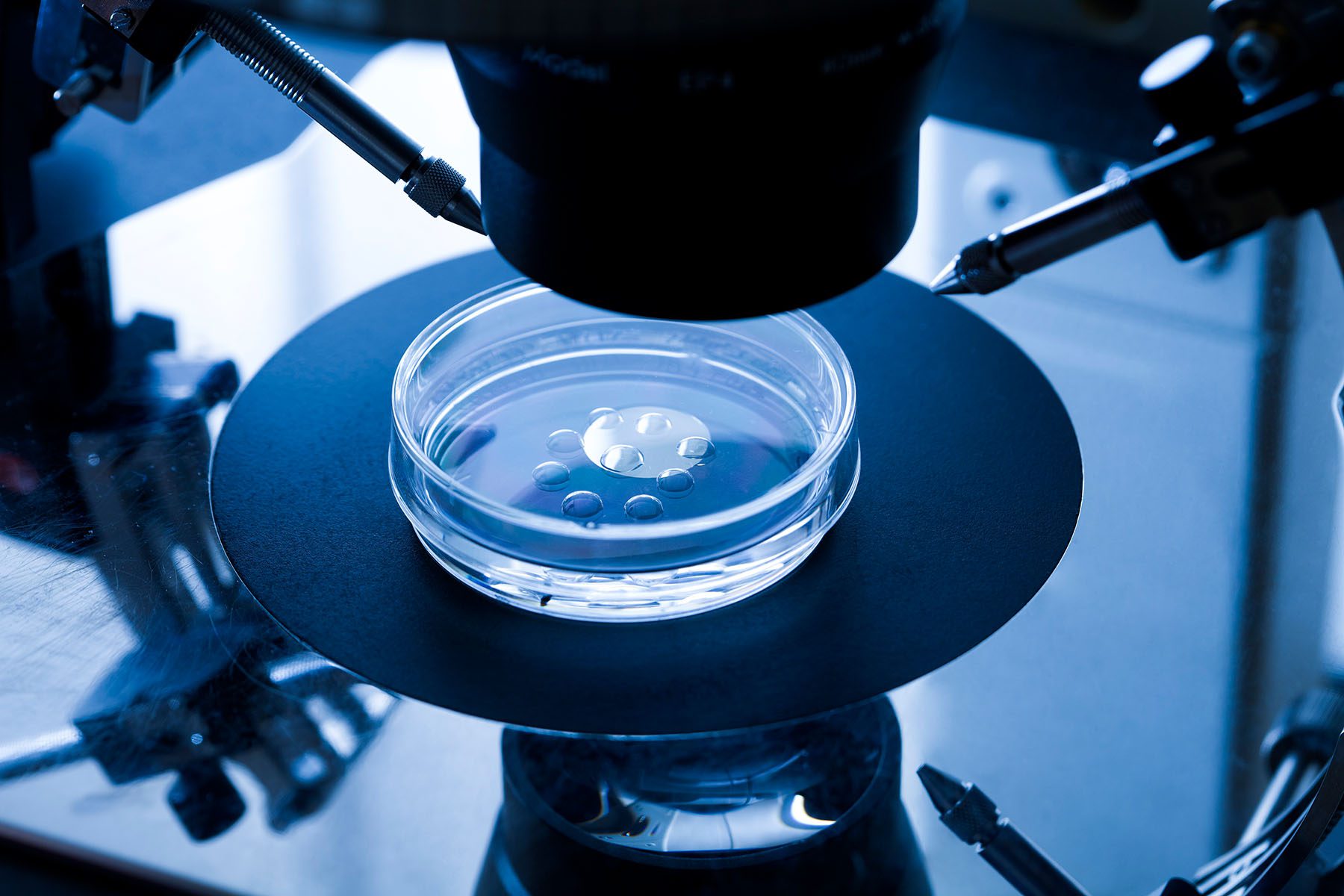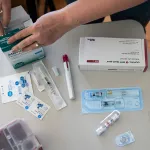The leak of the draft opinion from the Supreme Court in the case of Dobbs v. Jackson Women’s Health has set off a firestorm of questions about the future of reproductive rights. While much of the conversation has been focused on the immediate fate of abortion access should Roe be overturned and abortion rights turned over to the states, many of the 1 in 8 couples dealing with infertility are also questioning whether in vitro fertilization (IVF) and other assisted reproductive technologies (ART) will continue to be legal and available.
Abortion rights and the burgeoning world of IVF law are both forms of reproductive rights, Dena Sharp, a partner at Gerard Sharp and the first attorney to take an IVF-related case all the way to trial just last year, told The 19th. “There should be little dispute that whether someone makes a decision to extract material from their own body for preservation or immediate creation, that indicates the right to reproduce.”
It’s also why those in the infertility community are worried about the future of this form of family building.
What are IVF and ART?
The Centers for Disease Control and Prevention (CDC) defines Assisted Reproductive Technologies (ART) as all fertility treatments in which either eggs or embryos are or handled. ART describes procedures involving aspirating eggs from the ovaries, combining those eggs with sperm in the laboratory to create embryos, and then transferring those newly created embryos to either the uterus of the biological parent or to a gestational carrier.
ART does not include any fertility treatments in which only sperm are handled (such as intrauterine insemination, or IUI) or procedures where medications are taken to stimulate egg production without the removal and collection of those eggs.
All IVF cycles are ART cycles; ART describes the broader scope of what happens in these cycles outside of the creation of the embryo for intended transfer. IVF as a procedure involves fertilizing a human egg outside of the uterus. Over 300,000 ART cycles were performed in the United States in 2020.
IVF is the term most commonly used by patients undergoing ART to describe these procedures. Legal and reproductive endocrinology experts, however, use the phrase ART, which is also the term utilized in CDC data collection around these procedures.
In an average IVF cycle, a patient is given a series of medications to stimulate the development of multiple follicles of the ovaries at once. Once enough follicles have developed, eggs are then retrieved using ultrasound and a thin needle inserted through the vagina.
Once eggs are retrieved, they are then fertilized using a sperm sample. Just as with insemination that happens through intercourse, not all eggs fertilize and not all fertilized eggs become embryos. An embryologist will then watch the fertilized eggs over five to seven days; each day, some fertilized eggs may cease developing. Those that make it to somewhere between day five and day seven become what’s known as blastocysts, or embryos developed to a point that makes them best primed for transfer into the uterus or for cryopreservation.
Why are some embryos frozen?
Blastocysts are also frequently frozen (cryopreserved) for a number of reasons. Often, couples will have their embryos biopsied to test for genetically inherited diseases or screened to ensure they contain complete sets of chromosomal pairs; freezing allows the integrity of the embryo to be maintained while testing and evaluation is done. Even when these additional procedures are not performed on an embryo, the majority of people undergoing IVF will opt to freeze unused embryos to minimize risk of adverse health outcomes and maximize cost efficiency for a given IVF cycle.
Freezing embryos allows for the transfer of only one embryo at a time during the embryo transfer portion of a cycle — the current medical recommendation of ASRM — as multiples can increase risk for adverse health outcomes for babies and pregnant people both. Remaining frozen embryos can be used for subsequent cycles, either in the instance of a failed transfer cycle or should a couple who successfully conceive wish to grow their family again in the future.

Why would IVF and ART be at risk if Roe is overturned?
Sean Tipton, the chief advocacy, policy and development officer for the American Society of Reproductive Medicine (ASRM), told The 19th that should Roe be reversed, “nothing will change for infertility clinics for the most part the morning after.” The bigger issue, he said, was the long-term fallout. “What is happening is that for 50 years, there has been a constitutional right to privacy and now that right is going away. States can pass laws banning or restricting reproductive medical procedures.” That covers abortion, but could also include IVF, as it is a process inherently focused on the creation of fertilized eggs — and what happens next with them.
While the Dobbs decision stands to overturn Roe and the constitutional right to abortion access, it could also by default end ART in some states because the question that will be punted to the states is one about the legal status of a fertilized egg, something that applies to both abortion care and infertility care.
“The language of some of those [state] bills includes phrases and attempts to establish the legal standing of a ‘developing human,’” Tipton said. “They will say things like, ‘any stage of human development,’ ‘from the moment of human conception’ as the time that legal status is conferred onto a biological entity.”
What is the most immediate legal threat to IVF?
ART itself is such a relatively new practice that laws are still being retrofitted onto it as specific cases involving the procedure arise. This has left a patchwork of laws where some states classify eggs and embryos as property whereas others are seeking to define those same things as having the same full rights as a living citizen.
“Even before these seismic changes for reproductive rights, it was a pretty scary landscape in a lot of ways for people in the ART and IVF space who had a legal issue they wanted to see addressed,” Sharp said.
With the laws already varying state to state, the reversal of Roe would make differences only more stark, regardless of lawmakers’ intentions. “I think there will be direct implications for the full spectrum of reproductive rights if these rights are sent back to the states to decide. I think there is no doubt that people need to be concerned.”
Sharp said she would advise those considering ART to critically evaluate the political landscape in their state. “I don’t think anyone has all the answers in terms of the future of IVF and how available it will be, but there is a huge change happening and it is happening faster and faster.”
She adds that one of the elements adding a sense of urgency to the future of IVF is the speed at which laws are moving through state legislatures and litigation is moving through the court system. “In the old days, one of the comforts of the rule of law is that it moved at a glacial place. With the shadow docket of the Supreme Court and states laws like what we’re seeing in Oklahoma and Mississippi being jammed through, change can happen a whole lot faster.”

What will happen to frozen embryos?
Jody Madeira, the co-director for the Center for Law, Society & Culture at Indiana University’s law school and an expert on IVF and law, told The 19th that given the number of trigger laws already on the books, the instant criminalization of abortion that could go into effect in some states would mean that many of these states also immediately define life as beginning at fertilization.
“So the question now is what happens to embryos created in [ART] procedures waiting to be transferred but are still unfrozen — if you freeze them now, is that manslaughter? If you destroy them now, is that manslaughter?”
Madeira explained that right now, a number of rights tied to autonomy and privacy let individuals determine what happens to their embryos, whether they are fresh or frozen. The trigger laws designed to immediately outlaw abortion could also halt those same protections.
“They want to say legally and politically that a fertilized egg that has been in a lab for two days is the same as a 2-year-old baby,” Tipton said. “You can say that those things are humanly equivalent, but they’re not biologically equivalent. You can’t put a 2-year-old child in a freezer, because that would kill it. But an egg fertilized 48 hours ago can go into a freezer and come out just fine.”
What are some of the other legal risks ahead?
Tipton said he is concerned about the future implications of new state laws emerging from a Roe overturn because “no fertility clinic staff wants to be the test case.” New legal definitions of “personhood,” or the time at which a living being gets legal status, could restrict patients’ ability to decide what happens with eggs, sperm, and embryos collected and created during an ART cycle.That would include choices over the discarding of their own eggs, sperm, or embryos that were ultimately not used in a frozen embryo transfer cycle of IVF. In this kind of a cycle, once eggs and sperm are collected, multiple eggs are fertilized at once in a lab and then frozen, allowing a reproductive endocrinologist to transfer just one embryo at a time into a uterus, as is the current medical recommendation for IVF cycles.
Madeira said she’s also worried about the legality of what’s known as selective reduction, which is an option for IVF patients who are pregnant with mulitples. This procedure is sometimes performed when three or four fetuses emerge from a single cycle — either because more than one embryo was transferred or because an embryo splits, resulting in two fetuses. Some of those are terminated so that fewer fetuses remain, resulting in a lower-risk situation for babies and birthing parent alike.
It is also unclear what moves lawmakers would implement in dealing with existing frozen embryos and whether the creation of future frozen embryos may become banned.
“Everything we are seeing is going to be an attempt to establish the legal rights of the fertilized egg,” Tipton said, “whether or not that [fertilized] egg has established a pregnancy.”
Because of this, practices like pre-implantation genetic diagnosis (PGD), the process of biopsying an embryo before freezing to test for inherited genetic disease or to detect the present of cancer-causing genes like BRCA, and pre-implanation genetic screening (PGS), in which an embryo is checked to ensure it has complete chronomosal sets before transfer, could become illegal in some states.
That’s why Tipton said that he anticipates that what is to come is not that IVF becomes illegal outright, but that “the best way to do IVF” becomes banned in some states, forcing patients to incur massive costs as single eggs are retrieved and fertilized each cycle, with no guarantee that that egg ever fertilizes successfully, let alone implants and becomes a pregnancy.
Much like the future of abortion access, the answers to many of these questions will ultimately come down to what state a person lives in and how laws are applied to eggs fertilized during IVF. In Oklahoma, life is now legally defined as beginning at conception. In Illinois, the state legislature has already codified that embryos are not entitled to the same legal protections as a born person. Meanwhile Alabama, a state that stands to quickly ban abortion through trigger laws, has a carve-out in its law exempting eggs fertilized in a lab for IVF.
“We’re on a legal collision course,” Madeira said. “Are some embryos lesser than others under the law then? I think a lot of the problems we’re about to see emerge come from conflating two different questions. When life begins is a personal, religious and philosophical question. But when personhood begins is a legal question. There are a lot of implications to combining those two things.”

How might IVF laws change?
Some states may move to protect ART by carving out exemptions to personhood definitions for embryos created in a lab, as Alabama has already done. Others may seek to effectively codify ART access by categorizing eggs, embryos and other human material as property and not people. Property rights are not applied fundamental rights like abortion or marriage equality,” Sharp said. “Those two things are not in the Constitution — but the Constitution is all about property rights.”
Madeira said she anticipates that many legal challenges will arise out of the impacts that abortion bans and personhood laws have on Americans’ ability to grow their families through ART. “Basically, we will be litigating the right to decide if embryos are to be seen not as property but as entities that have the right to decide things. We are going to see laws that test the bounds of people’s privacy and if we are looking for a federalist interpretation as to the legality of IVF — how do we know what is deeply rooted in this nation’s traditions when it comes to that? They didn’t know about freezing embryos when this country was founded.”
It’s why Tipton said that when he talks about the question of whether legal rights should be assigned to embryos with personhood advocates, he always asks the same question of them every time.
“If there is a fire in a fertility clinic and you have a frozen embryo on one side of you and a six-month-old baby on the other and you can only save one, which do you take?” Tipton asked. “I don’t think for most people that’s a very hard decision.”







